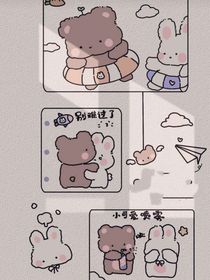特殊篇章玄宇宙计划原文序列部分章 (12-6)
mutually related (some universes may be,eg,forcing extensions, ground
models, or rank initial segments of others), and one may justifiably choose
elements of the hyperuniverse that are “prefcrable"in terms of this com-
parison. These are explicitly identified with the universes that, with respect
to those to which they are related, satisfy principles such as maximality or
omniscience.
Before considering how an element of the hyperuniverse may succeed in
being maximal.let us mention a danger of selecting universes according to
principles and criteria derived from an unbiascd look at the hyperuniversc.
In doing so one may be led to the adoption of first-order statements which contradictde facto set-thcoretic truth.Let us give an example One may
wish to make a selection of preferred universes based on a principle of min- AB) imaliry.One's criterion would therefore be that preferred universes should be as small as possible.This criterion may lead to the choice of just one uni-verse, the minimal model of ZFC, which would have as an implication that the statement that set models of ZFC do not exist expresses a property of V.This is however in obvious conflict with set-theoretic practice.i.e.,the exis-
数学联邦政治世界观提示您:看后求收藏(同人小说网http://tongren.me),接着再看更方便。
相关小说
- 雨倪中的心辰
- 泽是倪的养兄
- 0.0万字4周前
- 京烟龙女
- 【本文已完结】十八年前,九星连珠,大星陨落,京烟之野,龙女降世。十八年后,采莲少女,天真活泼,一名受伤男子,突然闯入她的世界。京烟异象,白池......
- 36.4万字4周前
- 炮灰自救指南
- 身为一本纯爱修仙文里的恶毒女炮灰,陆青玥觉得她最厉害的技能就是比主角还能装逼,还能苟!等等!这怎么穿回来之后打开方式不一样了,说好的纯爱文男......
- 49.2万字4周前
- 我好喜欢你(热销篇)
- 【锦瑟安年文学社】远赴人间惊鸿宴谈笑风声不动情。
- 3.3万字4周前
- 小说男女主设定资料
- 小说男女主的设定,可以拿来用
- 2.5万字4周前
- 美男兽夫太磨人
- 意外溺水,醒来竟看见一个绝色美男鱼趴在海边昏迷不醒!?我不过是去森林采果,怎么威武霸气的帅气狮人,占有欲爆棚的腹黑蛇人,阳光矫健的暖男豹人,......
- 6.7万字4周前





